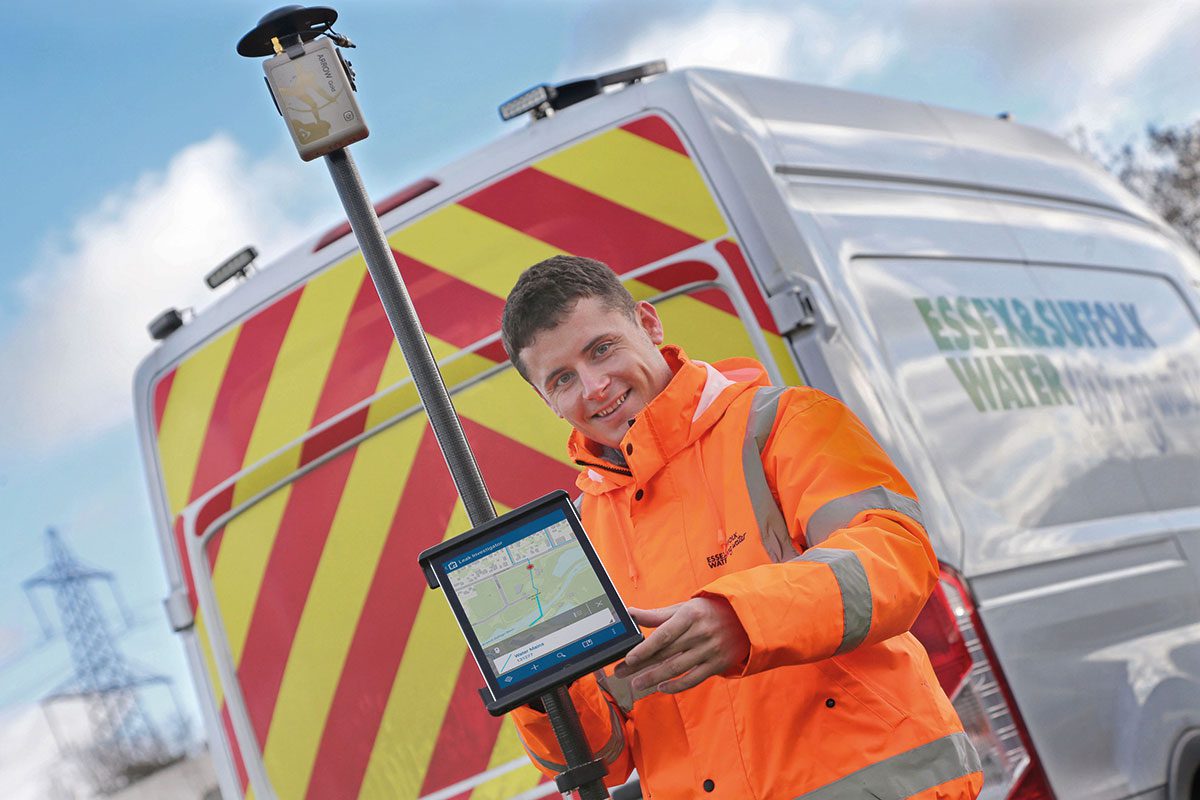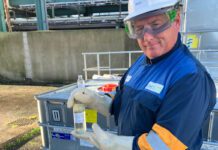Essex & Suffolk Water is working with technology company MGISS to improve the accuracy and currency of asset data while future proofing corporate systems. This is to support investment in augmented virtual reality visualisations and digital twin project for creating digital replicas of physical infrastructure.
Working alongside the design and construction team, MGISS has successfully introduced new satellite positioning equipment together with techniques to enhance the positional accuracy of captured data. Field operatives armed with smartphones running a mobile data collector app can now accurately record the real world location, and depth, of new and existing assets. MGISS is also helping Essex & Suffolk Water process the asset data for onward use in its corporate Geographical Information System (GIS).
“One of the key issues we face as both a design and construction team is the limited accuracy of some of our historic asset data,” commented Jake Day, Designer at Essex & Suffolk Water. “This inaccuracy can translate into lost time, and therefore a significant increase in costs. We believe this advancement will help us locate buried services more quickly in the future, which will help us to respond faster to customers.”
Part of the Northumbrian Water Group, Essex & Suffolk Water is a water only supplier serving around 1.8 million people in the south-east. Following an initial trial period, supported from concept to field testing by MGISS, Essex & Suffolk is now successfully deploying an Arrow Gold GNSS complete with RTK (Real Time Kinematic) subscription.
Construction teams record the exact position, to an accuracy of better than 2cm, and depth of assets on their iPhones which are loaded with Esri Collector for ArcGIS. This process has already been used on a variety of projects including large distance strategic pipelines, mains diversions and new build housing developments.
“This technology allows us to record the location and depth of new and existing mains along with any additional apparatus and fittings,” continued Day. “We can also capture the specification and properties of each item which, together with the geospatial data, will prove invaluable to inform future works. This process has allowed us to relay quality information to developers and stakeholders, adding value throughout the design and construction process.”
Andrew Hopkins, GIS & Positioning Technical Consultant at Northumbrian Water Group, added, “We are also working, with the support of MGISS, on simplified workflows to create a digital process whereby this high precision data will be presented directly for acceptance into the corporate GIS as validated data. It is hoped that these streamline processes will put us in a leading position when it comes to the visualisation of assets in 3D an integral step for research into virtual and augmented reality experiences and digital twin modelling.”







